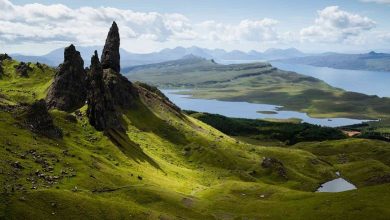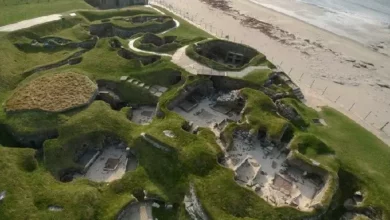Gearrannan: black houses Scotland
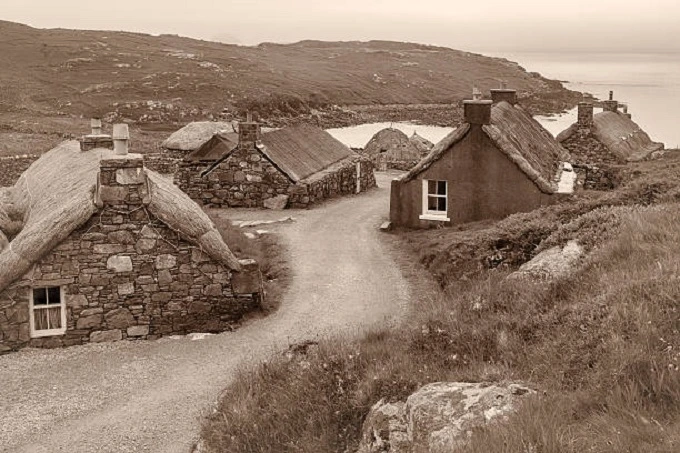
The picturesque Scottish settlement of Gearrannan, made up of odd-looking stone houses, can be found perched on top of a hill with a view of the Atlantic Ocean. In recent years, this location has become popular among people interested in great forms of recreation, even though the natives have been gone for the better half a century. The previously deserted settlement that preserves a piece of the history of the Outer Hebrides is now a popular destination for tourists who want to spend a night or two in a setting reminiscent of the Middle Ages.
You do not need to construct a time machine to experience for yourself what life was like in ancient Scotland several centuries ago. You can visit the village of Gearrannan in complete safety if you are interested in learning more about the history of Scotland, or more specifically, how fishermen, shepherds, and peasants lived during the medieval period in the Hebrides (the northernmost point of the archipelago, which is a part of the British Isles). This coastal agricultural settlement can be found near Carloway, on the western coast of the Isle of Lewis, tucked away in a completely isolated cove. On the coast of the Atlantic Ocean, as far as the eye can see, a tough landscape stretches out, among which you can see what remains of the local villages. In these villages, life continues at a different pace and according to entirely different rules, completely subordinate to the raging Atlantic Ocean.
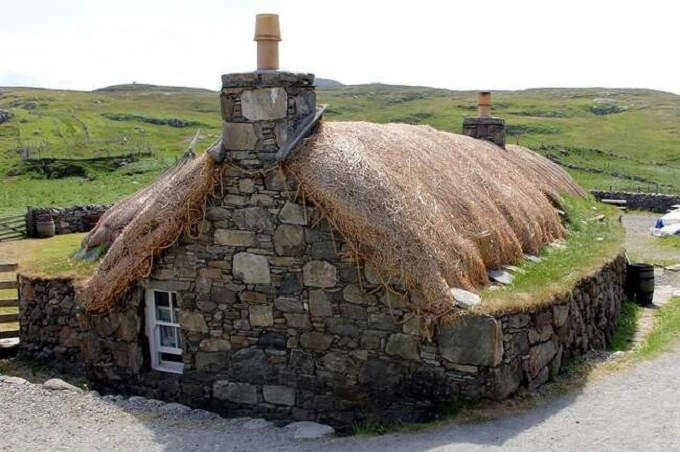
Although people inhabited some of the islands of the Outer Hebrides archipelago as early as the Iron Age, the Scots began to build substantial dwellings in the 1600s. For more than three hundred years, people on these lands worked hard to survive in the harsh conditions of the north. Before the Crofting Act of 1886 (a social system in Scotland based on small-scale food production), villagers and fishermen paid rent to live in the country and the Hebrides, among others. After the momentous event, peasants received a guarantee of land tenure they had never had before. As a result, patterns of life and farming changed. During this period, not only private or collective farms began to appear, but also solid stone dwellings called The blackhouses.
The floor plans and building techniques of houses and stores remained mostly unchanged throughout several centuries. Traditional stone homes were comprised of a single room up until the 1970s. The entire family and any household pets would reside in this room. Because of the island’s rocky coastline, no foundations were ever constructed there. The walls were constructed without any sort of foundation (sometimes, they could make a scaffolding). Stone quarried locally was used almost exclusively in construction since it was readily available on the islands. Dry masonry, an obsolete construction method in which binder mortar is omitted, was used to construct the walls, which resulted in the walls having a high thickness.
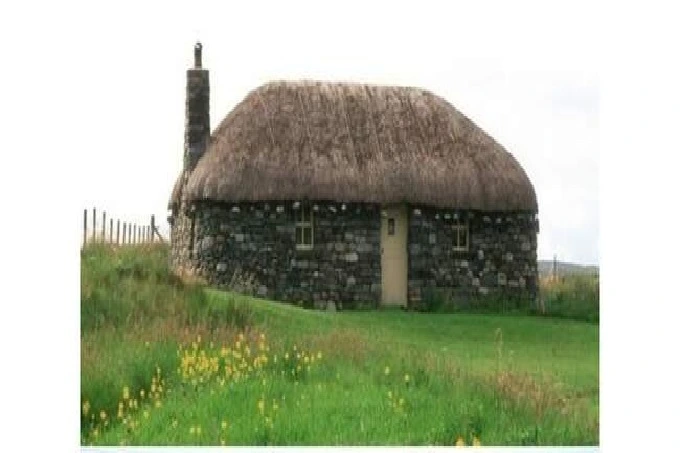
The roofs were also constructed out of stone, but a girder system was used for the ceiling. The roofs were constructed with a substantial coating of straw or hay, which served as an effective insulating material. This feature was not inconsequential given the climate of the North Atlantic. The floor was covered in soil, applied in layers, and then firmly compacted after each layer.
Originally, the only room in the house had a hearth in the center, but starting in the 19th century, stoves were used to heat the house and cook food. If the house was very long, it was possible to make two stoves, which, as a rule, were installed on the edges of the building.
It is worth noting that for peasants engaged in cattle breeding, pets were also kept in the house, behind a small partition at the far wall. Fishermen’s families were better positioned; they did not have to share their dwelling with livestock. But, more often than not, non-disabled adults were away for six months or even a year on other islands or at sea, with both men and women going to work. The former were engaged in whaling, while the women were content with catching, salting, and dressing herring and other small fish.
The inhabitants of the island were forced to live in conditions that left much to be desired. Before the middle of the past century, there were essentially no comforts or conveniences. Oil lamps have been used as a source of light ever since ancient times. Water was transported from nearby springs, but the local lake was used for washing clothes and laundry. The winter months were traditionally when women got together to plan communal laundry days. After that, a fire was started on the coast, and the water was heated in big vats to prevent the wet clothing from becoming immediately coated in a layer of ice.
The Hebrides did not have running water and electricity until 1949, yet, this did not prevent the islands’ decline into the wilderness. In the 1970s, everyday life came to a complete stop in many rural communities, including Gearrannan, which was one of them. At that point, only the elderly were still living on the islands, and their families were desperately trying to relocate them to more civilized towns where they could enjoy a higher standard of living.
It seemed that the abandoned villages would undoubtedly get lost in time, gradually become dilapidated, and turn into ruins, like many other ancient settlements that people had abandoned. But fortunately, in 1989, the local foundation Urras nan Gearrannan undertook to restore and preserve the village of Gearrannan, which was considered a historical monument. Enthusiasts succeeded in renovating the Black Houses into “medieval dwellings” of the colorful eco-resort Gearrannan Blackhouse Village, available for weekends or vacations.
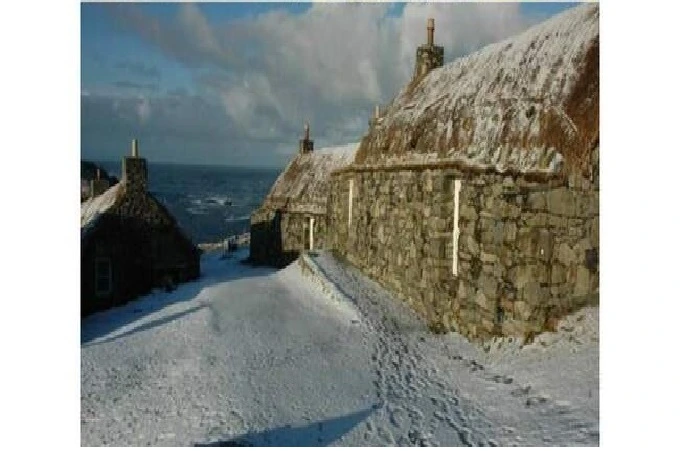
In this case, the organizers ensured that the holiday was accessible to all and for travelers on a very limited budget. Here is a full range of proposals: from the hostel, designed to accommodate a whole group of people (family rooms and hostel for 10-16 people), to 4-star “medieval apartments,” where you can hide out as a couple of lovers, and the whole family. “Deluxe black houses” are fully self-contained, with a bedroom, living room, kitchenette, and bathroom. Depending on the class, vintage huts vary in size and have some additional amenities, but the interior is simple, so you shouldn’t expect royal luxury.
Each home that was renovated received a new name that honored a family whose history was meticulously documented and archived. There is a village museum available for those interested in learning about the entire island’s history. In this museum, you will observe how the local people lived and what they achieved, including the masterworks of several generations of artisans. Particularly creative people will have the opportunity to participate in classes that teach the traditional weaving of the well-known Harris tweed cloth. The rest of the day can be spent strolling through the heathland and along the shore, taking in the breathtaking views, fishing or cycling, going to local cafes and then spending the evening doing nothing more than sitting by the fire.


